Are you a puppy finder looking for an adorable and unique furry companion? Look no further than the longhaired dachshund, also known as the sausage dog! These small dogs are a popular breed known for their distinctive appearance and charming personalities.
Longhaired dachshunds, beloved for their elongated bodies and short legs, come in various patterns and colors, all adhering to the same breed standard. Prospective owners considering a new pup should be aware that these dogs are prone to intervertebral disc disease and may want to ask breeders about the parents’ health before adopting. Additionally, those interested in showing their dachshund can register with the kennel club for more information on breed standards and events.
Table of Contents
- 1 Take our Quiz. Test your knowledge of Long Haired Dachshunds
- 2 Brief History of the Longhaired Dachshund
- 3 Physical Characteristics of Long-Haired Dachshunds
- 4 Long-Haired Dachshund Temperament and Personality Traits
- 5 Caring for Your Long-Haired Dachshund: Grooming, Exercise, and Nutrition Tips
- 6 Exciting and Unique Facts about Long-Haired Dachshunds
- 7 Long-Haired Dachshunds as Loving and Loyal Companions
- 8 Related posts:
- 9 Dapple Dachshund: Breed Facts & Care Guide
- 10 Beagle Vocalizations: 10 Fun Facts & Sound Effects
- 11 Tricolor Cavalier King Charles Spaniel: Ultimate Guide & Care Tips
- 12 Beagle Pros and Cons: Is It the Right Family Pet?
Take our Quiz. Test your knowledge of Long Haired Dachshunds
[SmartQuizBuilder id=24][/SmartQuizBuilder]
We’ll explore the history, unique features, temperament, and more of the dachshund dog breed – a little dog that is also a hunting dog often seen as a show dogs. So grab your longhair dachshund puppy (or just your favorite furry friend), and let’s get started!
Brief History of the Longhaired Dachshund
Origins of Dachshunds in Germany
Dachshunds, a popular hunting breed known as “sausage dogs,” originated in Germany during the 16th century. They were bred to hunt badgers and other burrowing animals, thanks to their long bodies and short legs allowed them to dig into tunnels. If you’re looking for a new pup, find a reputable breeder who specializes in this unique breed.
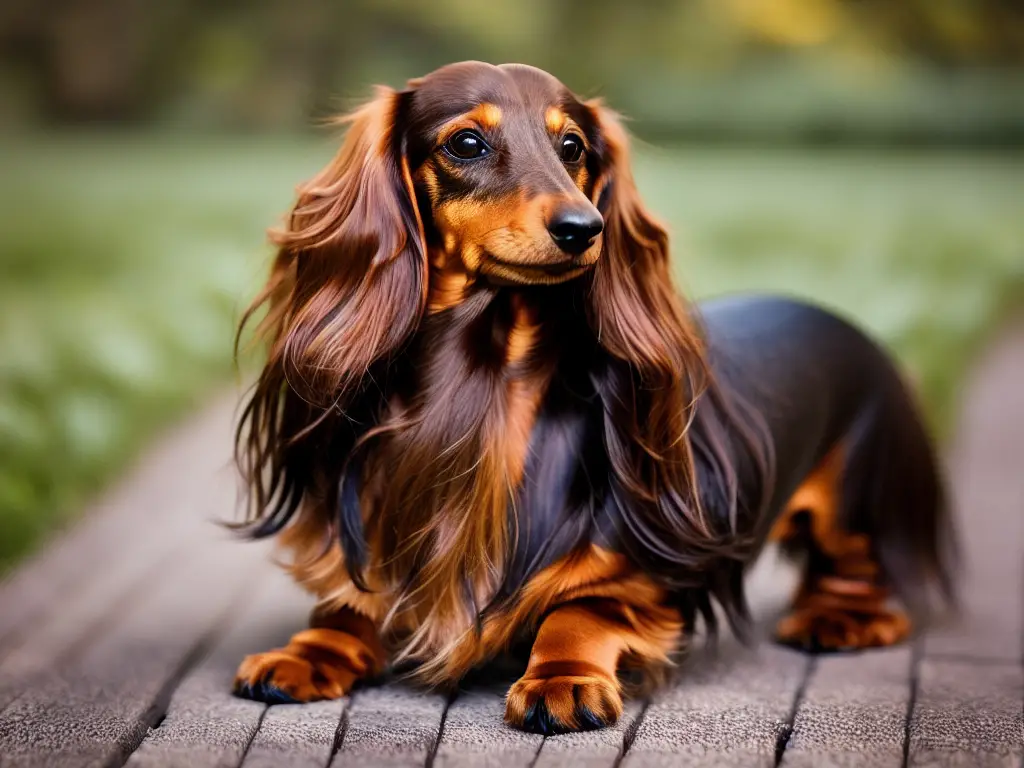
How Long-Haired Dachshunds Were Bred from Smooth-Haired Dachshunds
The first dachshunds were smooth-haired, but longhaired dachshunds were later developed through crossbreeding with various dog breeds, such as Spaniels and terriers. The breeder ensured that the new puppies had a long coat of fur that provided additional warmth for hunting in colder climates. A veterinarian was consulted to ensure the health of the puppies.
Historical Uses of Dachshunds, Including Hunting and Companionship
With their unique body shape, Dachshunds have been historically used for hunting badgers and other underground animals. Nowadays, they are famous for their loyalty and affectionate nature as companion dogs and their long fur, which requires regular visits to the veterinarian for grooming. If you’re looking to adopt a Dachshund puppy, find a reputable breeder who can provide you with all the necessary information about their care and maintenance.
Unfortunately, the extended back of dachshunds makes them prone to intervertebral disc disease (IVDD), a potentially debilitating condition that can cause paralysis. Owners of longhaired dachshunds must take preventative measures such as maintaining a healthy weight and avoiding activities that could strain their backs.
Physical Characteristics of Long-Haired Dachshunds
Description of their distinct appearance
Longhaired dachshunds, also known as longhaired sausage dogs, are famous in the US. These adorable puppies are loved for their unique and beautiful coats, which can grow up to 3 inches long. Their soft and silky fur makes them a popular choice for pet owners who love cuddling with their furry friends. If you’re a dachshund owner, regularly taking your pup to a veterinarian is essential to ensure they stay healthy and happy.
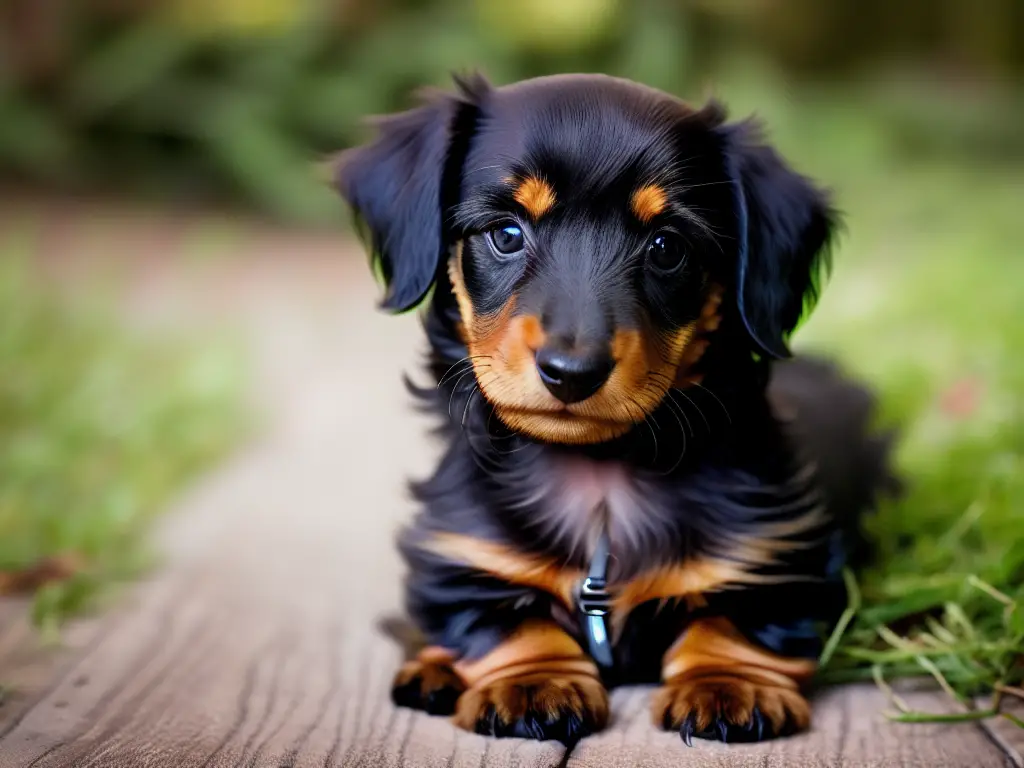
Comparison to other types of dachshunds
Three main types of dachshunds are wire-haired, smooth-haired, and longhaired. While all three types share similar physical characteristics, such as short legs and long bodies, the most significant difference lies in their coats. Wire-haired dachshunds have thick, rough skin that requires regular grooming to maintain its shape. Smooth-haired dachshunds have short, sleek skin that requires minimal grooming. Longhaired dachshunds fall somewhere in between – they require regular brushing to prevent matting but aren’t as high maintenance as wire-haired dachshunds. If you’re considering adopting a dachshund puppy, it’s essential to find a reputable veterinarian who can guide caring for your new furry friend at home.
Common color variations are seen in longhaired dachshunds
Longhaired dachshunds make great family dogs and puppies. They come in various colors, including black and tan, red, cream, chocolate and tan, blue and tan, and Isabella (a type of fawn). Some may even have markings such as brindle or piebald. The American Kennel Club recognizes 12 colors for the breed, making them a perfect addition to any home.
In terms of size, black longhaired dachshunds typically weigh between 16-32 pounds, depending on their gender. As a puppy, this dog’s height at the shoulder can range from 8-9 inches tall.
Long-Haired Dachshund Temperament and Personality Traits
Overview of Their Personality Traits
Longhaired dachshunds are known for their charming personalities as puppies. They are loyal, affectionate, and playful dogs who love being around their owners. These puppy dogs were initially bred in Germany to hunt badgers, so they have a natural hunting instinct. However, they can make great family pets.
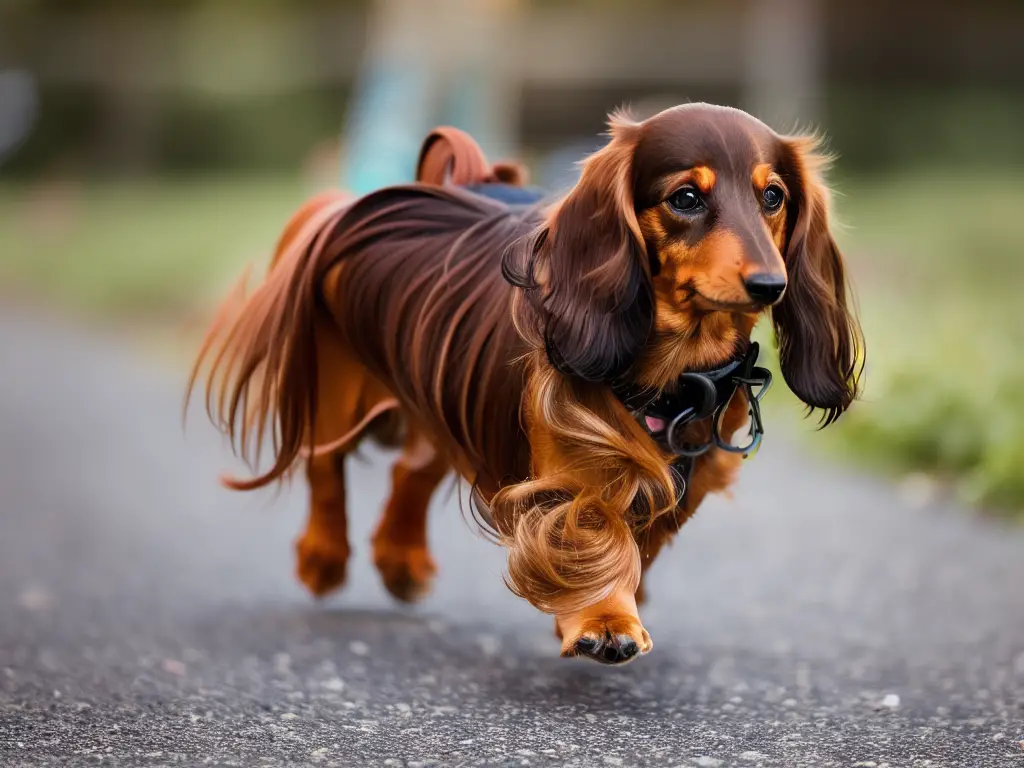
One of the most notable personality traits of longhaired dachshunds is their loyalty to their owners, making them excellent companion pups who will always be by your side.
Interaction with Children and Other Pets
Longhaired dachshunds are generally good with children and other pets if they are correctly socialized from a young age. Their playful nature makes them great playmates for kids and pups. However, it’s important to supervise interactions between children, puppies, and dogs to prevent accidents.
Longhaired dachshunds may see smaller animals as prey because of their hunting instincts. They may also display dominant behavior towards other dogs if not properly socialized. It’s essential to introduce new pets, including pups, slowly and under supervision.
Potential Behavioral Issues or Challenges
Longhaired dachshunds may exhibit specific behavioral issues or challenges if not appropriately trained. Some common problems include separation anxiety, barking excessively, digging holes in the yard, and aggression toward strangers. As a dog owner, addressing these issues early on ensures a happy and well-behaved pet.
Proper training and socialization from a young age are essential for dachshund puppies and dachshund dogs, incredibly long-haired dachshund puppies and long-haired dachshunds, to prevent behavioral issues from developing. Positive reinforcement training methods work best for this breed as they respond well to treats and praise.
Caring for Your Long-Haired Dachshund: Grooming, Exercise, and Nutrition Tips
Regular Grooming is Key to Healthy Fur
Longhaired dachshunds have beautiful coats that require proper care to maintain their health and appearance. Regular grooming is essential to prevent matting, tangles, and skin issues. Brushing your dog’s coat at least once a week will help remove loose hair and dirt while distributing natural oils throughout the fur. You can use a slicker brush or a comb with wide teeth to detangle any knots gently. Bathing your dachshund every three months using a mild shampoo will keep them clean without stripping their coat of its natural oils.
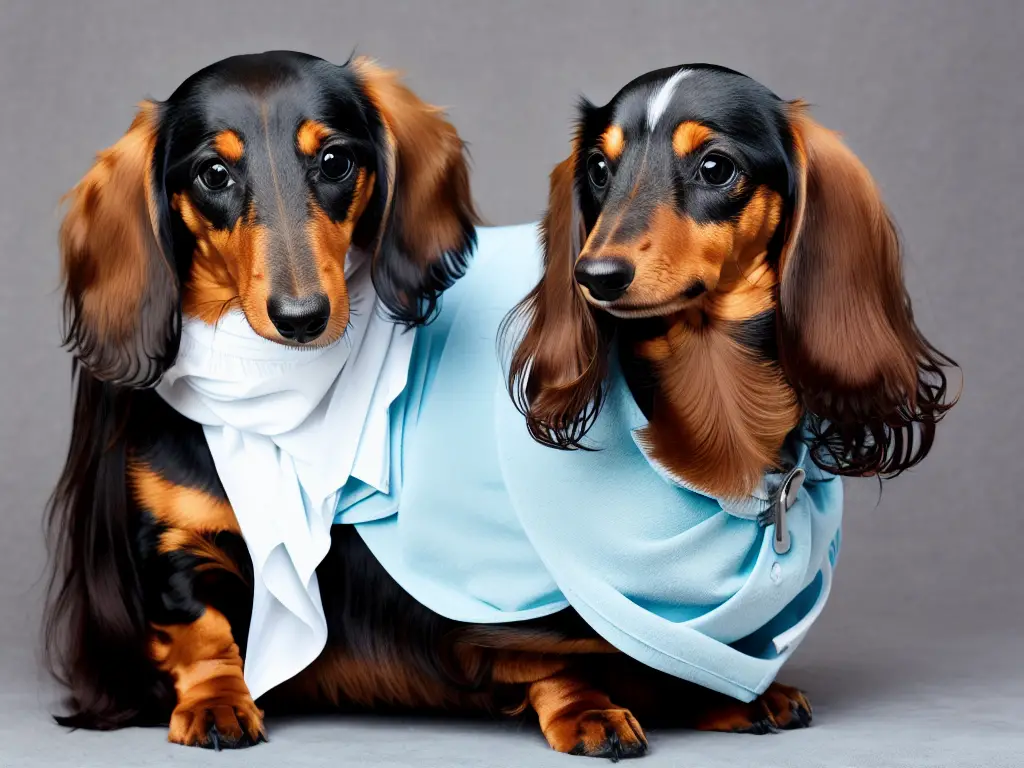
Recommended Exercise Routines Based on Energy Levels
Longhaired dachshunds are energetic dogs that require regular exercise to stay physically and mentally healthy. They enjoy outdoor activities such as walks, hikes, or playing fetch in the backyard. However, they are prone to back problems due to their long spine; therefore, you should avoid high-impact exercises like jumping or running upstairs. Instead, engage your dachshund in low-impact activities such as swimming or walking on flat surfaces like pavement or grass.
Nutritional Requirements Specific to Long-Haired Dachshunds
Proper nutrition is crucial for longhaired dachshunds’ overall health and well-being. A balanced diet of high-quality protein sources like chicken, fish, and vegetables like sweet potatoes and carrots will provide essential nutrients for optimal dog health. Avoid feeding your dachshund table scraps, leading to obesity and other dog health issues.
Routine Checkups Help Identify Health Issues Early On
Regular checkups with your veterinarian are necessary to maintain your longhaired dachshund’s good health. During these visits, the vet will perform physical exams and blood tests, if required, to identify any underlying health issues early on for your dog.
Exciting and Unique Facts about Long-Haired Dachshunds
Famous Owners
Longhaired dachshunds, also known as longhaired sausage dogs, are popular among famous people. Queen Victoria was a proud owner of this dog breed and is credited with popularizing it in England. Other renowned dog owners include Pablo Picasso, who had a longhaired dachshund named Lump that he often featured in his paintings, and Andy Warhol, who also owned a dachshund named Archie.
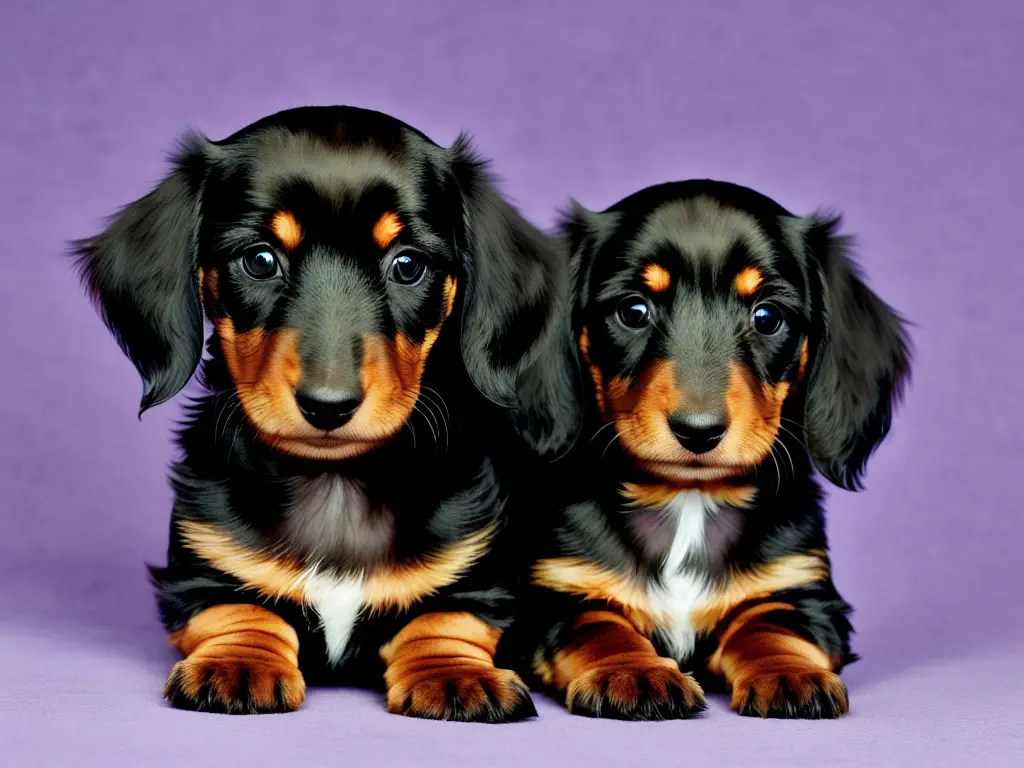
Unique Abilities or Skills
Longhaired dachsie, also known as longhaired dachshund, is a beloved breed for its unique abilities and skills. One of the most notable is their exceptional sense of smell. These longhair dachshund puppies were initially bred to hunt badgers, which required them to use their keen sense of smell to track down prey underground. Today, many longhaired dachsie or dachshund puppies still possess this impressive ability and are used as scent dogs in law enforcement.
Another exciting skill some longhaired dachshund dogs possess is their ability to climb trees. While not all longhair dachshund puppies or dachshund owners may be aware of this, some members of this breed have been known to climb trees chasing small animals like squirrels.
Interesting Behaviors
Longhaired dachsie puppy is known for having quirky behaviors that set them apart from other dogs. For example, they love to burrow under blankets or pillows when they sleep or relax. This behavior stems from their hunting instincts; they burrow underground to track down prey.
Another d interesting behavior in this breed is their tendency to be stubborn and independent-minded. While loving and loyal companions, longhaired dachsie can be challenging to train due to their strong-willed nature.
Long-Haired Dachshunds as Loving and Loyal Companions
In conclusion, longhaired dachshunds are an excellent addition to any dog-loving family. Their unique history, physical characteristics, and personality traits make for loving and loyal canine companions. Proper grooming, exercise, and nutrition care ensure their health and happiness as dogs.
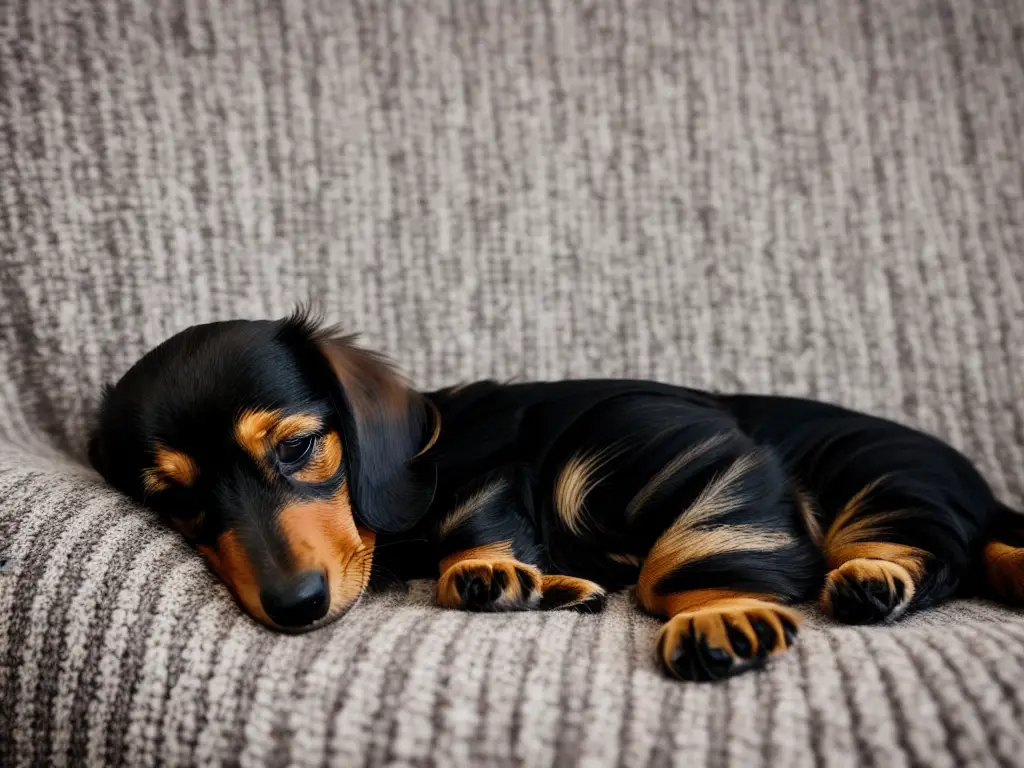
It’s important to remember that long-haired dachshunds require regular grooming to maintain their beautiful long fur. This is especially important for long-haired dachshund puppies, as their skin can become matted and tangled. Exercise is also crucial for their overall well-being, as they have high energy levels despite their small size. A balanced diet is essential for keeping your longhair dachshund puppy healthy and active.
Interesting facts about longhaired dachshunds include their origin as hunting dogs in Germany and the fact that they come in various colors, including black and tan, cream, and red. They are also known for being stubborn but affectionate towards their owners.
If you’re considering adding a longhaired dachshund dog to your family, be prepared for lots of love and loyalty from your new furry friend. They make great pets for families with children or single individuals seeking canine companionship.
FAQs
Are longhaired dachshunds good with children?
Yes! Longhaired dachshunds are known to be friendly and affectionate towards children and make great family dogs.
How often should I groom my longhaired dachshund?
Brushing your longhaired dog, such as a dachshund, at least once a week is recommended to prevent matting in their coat.
Do longhaired dachshunds have any health concerns?
Like all dog breeds, some health concerns-haired dachshunds, such as back, problems due to their elongated spine.
Do longhaired dachshunds shed a lot?
Yes! Like any other dog, Longhaired dachshunds shed moderately throughout the year, but regular grooming can help manage shedding.
Are longhaired dachshunds easy to train?
Longhaired dachshunds are a type of dog that can be stubborn, but with patience and positive reinforcement training, they can learn a variety of commands.